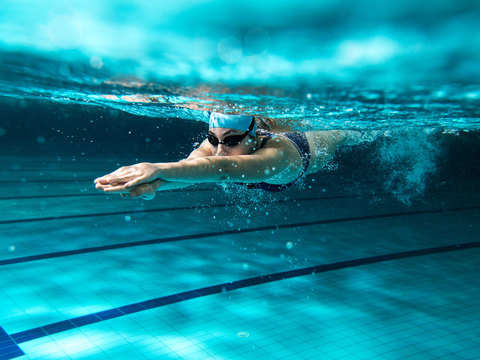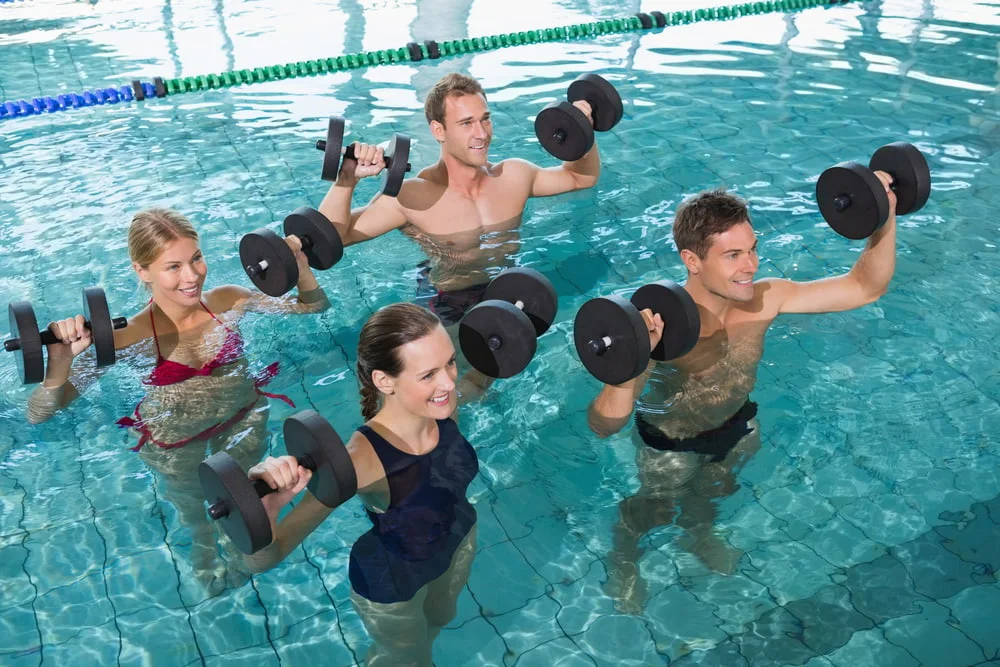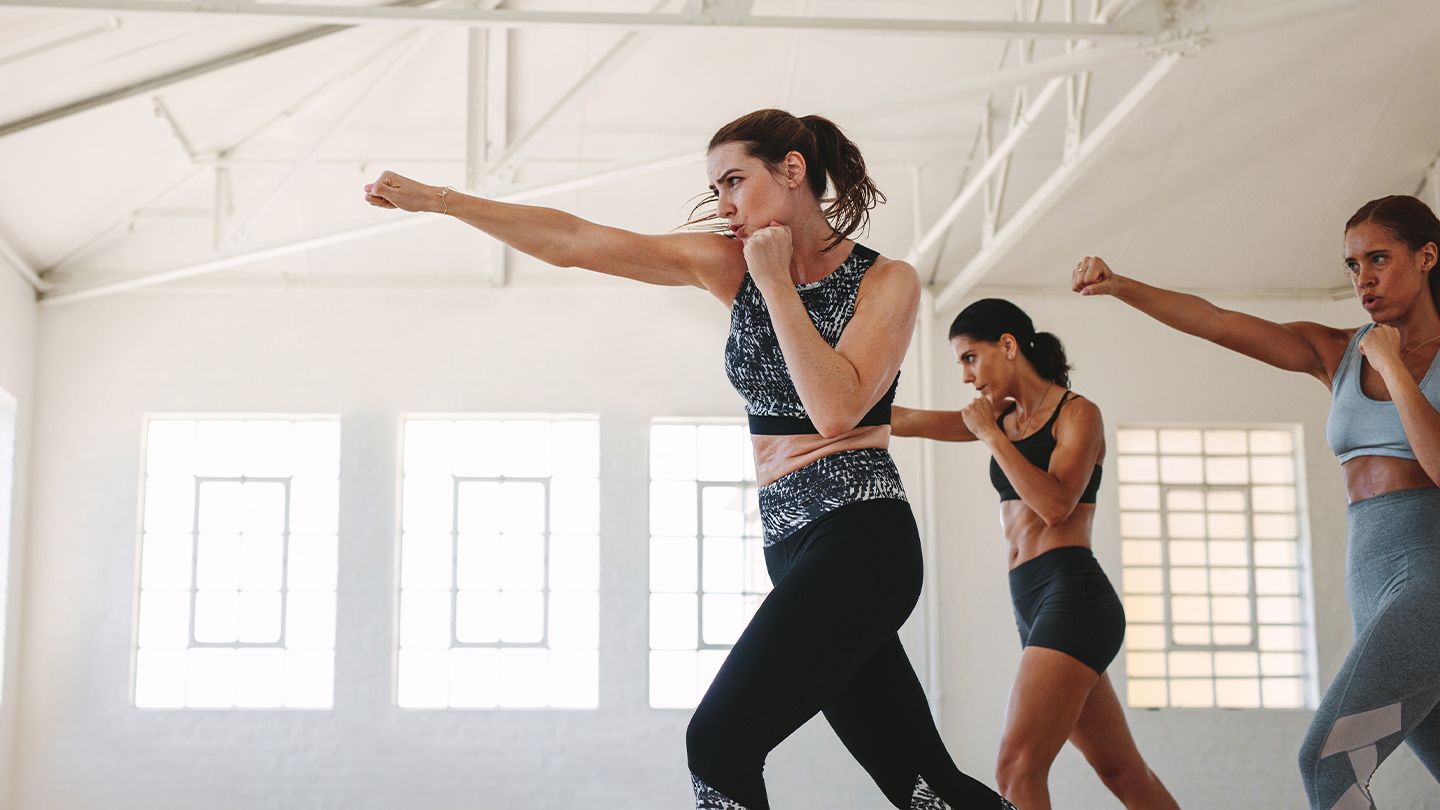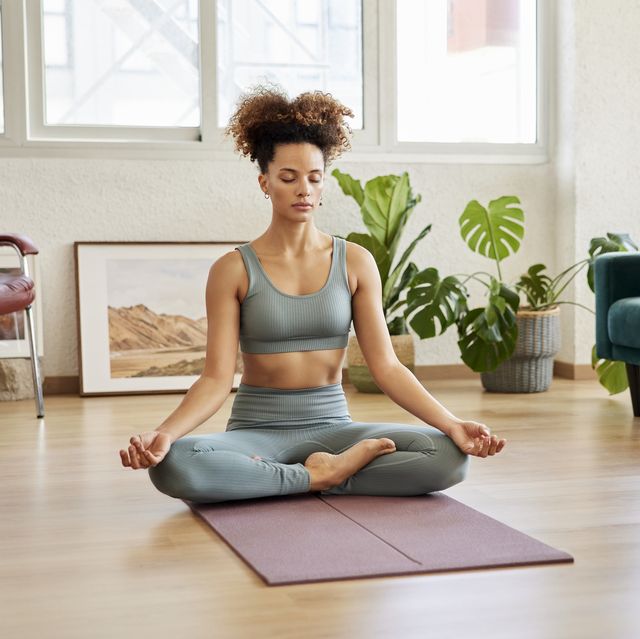This full-body workout will increase your heart rate. But water provides natural resistance that has a positive effect on joints.
Want to add variety to your workout routine? There's no better place to do this than a swimming pool. There are many reasons to transfer your training to the water.
Let's start from the fact that water exercises are low impact and therefore gentle on muscles and joints. According to research published in ACSM's Health and Fitness Journal in 2019, this means that exercising in water allows you to exercise at a higher intensity and for a longer period of time than in water. .
"By placing less pressure on the body, low-impact workouts require fewer rest days and reduce the risk of injury," adds NASM-certified Angela Ruest Personal. Water aerobics coach and instructor at Life Westminster. in Westminster, Colorado.
This means that moving your business to the water can also be a great way to rehabilitate yourself after an injury. Be sure to consult a doctor, however. Approval first.

Additionally, water provides its own natural resistance. “The constant resistance of the water works the entire body, increasing strength and improving coordination and balance,” says Ruest.
And if you're looking for a way to escape the grueling summer temperatures and keep your workout cool, water obviously helps too.
The Pool-Based, Aqua Aerobics-Inspired Workout

Here’s a low-impact cardio pool workout designed by Ruest.
What you need to know before you start
The best way to perform this routine is on Use dumbbells ( lightweight bars with foam tips that provide extra resistance when diving up and down in the water) or water gloves. Don't have them? No problem because the water resists without them.
The Aquatic Activity Association also recommends the use of athletic shoes for training in shallow water, particularly for programs that involve pushing or movement to reduce body load. joints that bear weight, allow for a better stride during movement, increase traction during changes of movement, protect the feet from injuries and improve the quality of training (especially for obese people, pregnant women or women with diabetes and diseases musculoskeletal).
Who should try it
Water aerobics is not a danger for almost everyone, regardless of physical condition level or age. If you have an autoimmune disease, consult your doctor first, as water temperature may be a factor, Ruest says. And if you've recently had surgery, get your doctor's approval first. The International Fitness Association also recommends that people with respiratory failure, severe low blood pressure, vaginal or bladder infections, infectious diseases, chlorine allergies, and open or unhealed wounds avoid exercising in water. .
How to do the workout
Spend about five minutes warming up and doing variations of these exercises without equipment.
To practice, perform one minute of each exercise consecutively in waist- or chest-deep water, allowing 15 to 30 seconds between exercises. This is one set.
Repeat the process for a total of three sets or until 30 minutes have passed. If this is too much for your fitness level, start with two sets and add a third when you're ready. While Ruest says there's no need to cool off in the water, he likes to stretch poolside after water aerobics classes.
Run these seven exercises two or three times a week, perhaps alternating it with other activities you like.
1. Water walking
Stand with your feet hip-width apart and a dumbbell in each hand, arms at your sides. From this position, walk as hard as you can, bending the opposite arm and leg towards the shoulder. To make it even more difficult, replace walking with running in place.
2. Side walk with wall push-ups
First, stand near one of the long sides of the pool and look towards the opposite side. Hold a dumbbell in each hand. Now quickly go to the opposite side of the pool. Once there, place the dumbbells aside at the edge of the pool and place your hands on the pool wall with your wrists under your shoulders and your feet about a foot away from the wall (your body should be at a slight angle to the pool wall ). ). From this position, lower your chest toward the wall and release to start. Repeat five times.
Then take the dumbbells, quickly go to the other side of the pool and repeat the push-ups. Continue taking turns.
To make it even more difficult, run instead of walking. Or, if you want to do more than just push-ups, stand at the edge of the pool and stand up as if you were climbing out of the pool, then lower yourself down, repeating five times.
3 . Jumping Jack
Stand with your feet together and hold a dumbbell in each hand at your sides, with palms facing inward. Jump (or walk) with about one foot between your feet. With your arms slightly bent, lift the dumbbells out to the side and stop when you reach the water's edge. Release to start and repeat, moving quickly.
4. Rocking Horse
Stand with your feet staggered, right foot forward and left foot back. Hold a dumbbell in each hand, with your arms at your sides. Bend your left knee and step back with your left foot. Lean your upper body forward and move both arms with palms facing down on the surface of the water. If you feel like you can no longer bend forward, pull your arms towards your body with palms facing inward and shift your weight onto your left leg as you bend your right knee forward. Continue rocking back and forth, increasing your speed. In the next minute, repeat the movement on the opposite side so that the left leg is in front and the right leg is in back.
5. Lateral movements
Stand with your left side close to the pool wall and look at the long end of the pool. Hold dumbbells in each hand, with hands at your sides and palms facing your body. Take a wide step to the right with your right leg, lifting both arms out of the water. Place your left foot next to your right foot and take a quick step to the right. When you reach the wall, reverse direction, this time with your left foot forward. Move as quickly as possible.
6. Heads
Stand with your feet together, a dumbbell in each hand and your arms at your sides. From this position, jump to turn both feet to the right, trying to stay close to the starting point (your feet should be parallel to each other, but change direction from front to back). . Then jump again so that your body and feet (which remain parallel) are facing diagonally to the left. Continue alternating rapidly from right to left until the minute is up.
7. High knee raise with overhead press
Stand with your feet hip-width apart. Hold a dumbbell in each hand and lift your arms forward so they are parallel to your pelvic floor. Raise your right knee towards your chest while pressing the dumbbells. Moving quickly, release to start, lower right leg as you bring arms to shoulder height, and repeat with left knee, pushing arms up. The pace must be fast; To make it more challenging, add a jump when you switch legs for a run.







